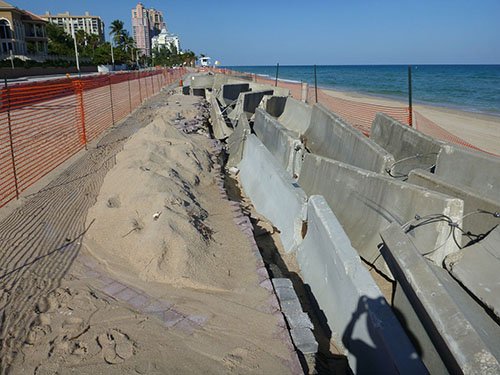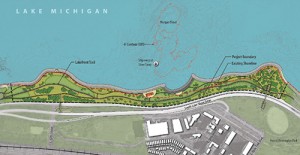All about Shore Protect Team
Wiki Article
The Only Guide for Shore Protect Team
Table of ContentsGet This Report on Shore Protect TeamThe Basic Principles Of Shore Protect Team What Does Shore Protect Team Mean?Shore Protect Team - QuestionsThe 10-Minute Rule for Shore Protect Team10 Easy Facts About Shore Protect Team ShownA Biased View of Shore Protect Team
Decline in building value: As the location tourism is influenced by erosion, so after that is the economy. Customers are less likely to look for a coastline residence that might be destroyed at any kind of minute by the upcoming flooding and erosion emergency. Consequently, residential property worth can go down exceptionally and influence the entire region.Whether a beach is simply small and crowded or needs to shut completely for the safety and security of the ecological community and nearby residential or commercial properties, this significantly affects tourism. Subsequently, regional economic situations are affected (https://unsplash.com/@shrprtcttm). Risk of injury: The raised threat of flooding and structural failures triggers a boosted risk of injury to close-by vacationers and neighborhood members

is home to greater than 84,240 miles of coast with 41% of it subjected to the open sea. Coastal designers are in fee of securing the shore versus adjustments by minimizing the damaging effects of both all-natural and man-made occurrences. Shoreline stablizing is straight pertaining to their task. Waterside hotels: Due to the fact that shoreline disintegration impacts tourism, it impacts the success of waterfront resorts.
Shore Protect Team Things To Know Before You Buy
Coastal commercial organizations: No vacationers means no service. Coastal state parks: State parks that exist along shorelines are at threat of damages.Hard stablizing makes use of man-made structures as defense to manage erosion. A lot of types of difficult stablizing like seawalls and sheet steel are not excellent for coastline stablizing.
Fascination About Shore Protect Team
There's also inadequate evidence of their efficiency depending upon the kind of shoreline and regional conditions. Difficult stablizing techniques often tend to be a lot more tough to set up and don't match the natural aesthetic, standing out like a sore thumb and damaging neighborhood ecological communities in several scenarios. Coastline sustenance is the process of adding shed sand and debris back to coastlines after erosion has taken place.TrapBags aid in the procedure of coastline nutrition by securing natural environments and allowing plants to expand. While this process can be expensive and is not irreversible, the pros have a tendency to surpass the cons. TrapBag barriers deal many buildings that make them ideal for seaside and riverbank erosion protection. They're: Environmentally friendly: You can utilize native dirt both to border and to load the TrapBags.

A Biased View of Shore Protect Team
They can also be set up without any kind of hefty machinery. Cost effective: TrapBags are optimal for both small and huge areas of coastline.Combined with a high building and construction cost, this has actually caused raising use other soft design seaside management choices such as beach replenishment. Seawalls are created from different products, most generally reinforced concrete, rocks, steel, or gabions. Other possible building products consist of plastic, wood, aluminum, fiberglass composite, and eco-friendly sandbags made from jute and coir. The appropriate seawall design relies upon location-specific elements, including bordering disintegration processes. There are 3 primary kinds of seawalls: vertical, rounded, tipped, and mounds (see table listed below). A record published by the United Nations Environment Program (UNEP) recommends that the tsunami of 26 December 2004 caused much less damages in the areas where natural obstacles were existing, such as mangroves, reef or seaside vegetation.
Natural obstacles, such as coral reefs and mangrove woodlands, avoid the spread of tsunamis and the circulation of coastal waters and reduced the flooding and surge of water. A cost-benefit approach is an effective means to identify whether a seawall is ideal and whether the advantages are worth the expense.
How Shore Protect Team can Save You Time, Stress, and Money.
A seawall is a static feature which can contrast with the vibrant nature of the coastline and restrain the exchange of sediment between land and sea. The table below summarizes some favorable and unfavorable results of seawalls which can be used when contrasting their efficiency with various other seaside management alternatives, such as beach nourishment. [] Benefits and negative aspects of seawalls according to Short (1999) Benefits Downsides Long term remedy in comparison to soft beach nourishment.
This can cause beaches to dissipate, making them ineffective for coastline goers. Generally, seawalls can be an effective method to manage seaside disintegration, but just if they are constructed well and out of products that can hold up against the force of ongoing wave energy.
Little Known Facts About Shore Protect Team.
Combined with a high construction expense, this has actually brought about enhancing use other soft engineering coastal management options such as beach replenishment. Seawalls are created from different materials, a lot of generally strengthened concrete, rocks, steel, or gabions. Other feasible building and construction materials consist of plastic, wood, light weight aluminum, fiberglass composite, and eco-friendly sandbags constructed from jute and coir. The proper seawall style depends on location-specific aspects, consisting of surrounding disintegration processes. There are 3 major sorts of seawalls: vertical, curved, stepped, and mounds (see table listed below). A record released by the United Nations Environment Programme (UNEP) recommends that the tidal wave of 26 December 2004 triggered less damages in the areas where all-natural obstacles existed, such as mangroves, coral reefs or seaside plants.All-natural barriers, such as coral reefs and mangrove woodlands, protect against the spread of tsunamis and the circulation of coastal waters and minimized the flooding and rise of water. A cost-benefit strategy is a reliable method to identify whether a seawall is appropriate and whether the advantages deserve the cost.
The Definitive Guide for Shore Protect Team
A seawall is a static feature which can contrast with the dynamic nature of the coast and restrain the exchange of sediment in between land and sea. Benefits and drawbacks of seawalls according to Short (1999) Advantages Negative aspects Lengthy term solution in contrast to soft coastline nourishment.
This can cause coastlines to dissipate, making them worthless for coastline goers. Normally, seawalls can be a successful means to manage seaside disintegration, yet only if they are built well and out of products that can hold up against the force of recurring wave power. Some understanding is needed of the seaside processes and morphodynamics particular to the seawall area.
Report this wiki page